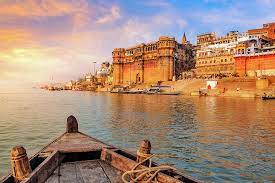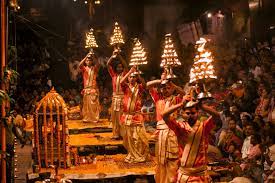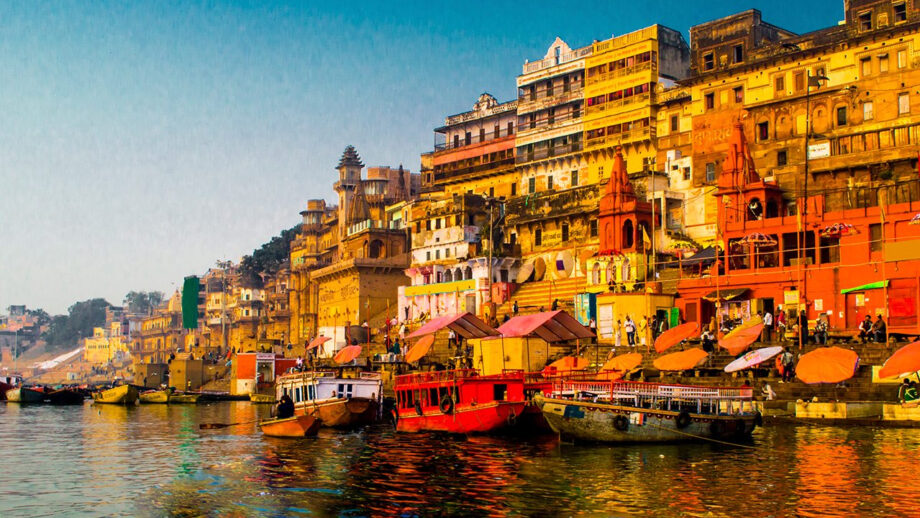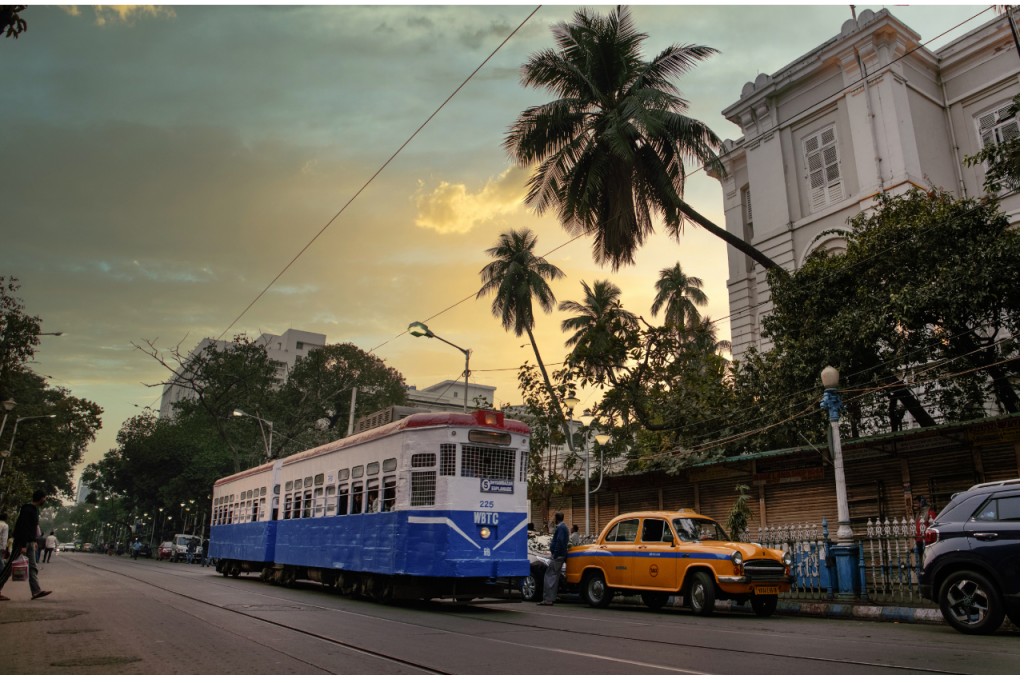At over 5000 years old, Varanasi is one of the oldest inhabited places on earth:
It is also one of India’s holiest cities. According to Hindu mythology, Lord Shiva founded the city 5000 years ago. Varanasi is one of the oldest continuously inhabited cities in the world.
Its early history is that of the first Aryan settlement in the middle Ganges valley.
By the 2nd millennium BCE, Varanasi was a seat of Aryan religion and philosophy and was also a commercial and industrial centre famous for its muslin and silk fabrics, perfumes, ivory works, and sculpture.
Varanasi was the capital of the kingdom of Kashi during the time of the Buddha (6th century BCE), who gave his first sermon nearby at Sarnath.
The city remained a centre of religious, educational, and artistic activities as attested by the celebrated Chinese Buddhist pilgrim Xuanzang,
who visited it in about 635 CE and said that the city extended for about 3 miles (5 km) along the western bank of the Ganges.

Varanasi subsequently declined during three centuries of Muslim occupation, beginning in 1194. Many of the city’s Hindu temples were destroyed during the period of Muslim rule, and learned scholars fled to other parts of the country.
The Mughal emperor Akbar in the 16th century brought some relief to the city’s religious and cultural activities.
There was another setback during the reign of the Mughal emperor Aurangzeb in the late 17th century, but later the Marathas sponsored a new revival.
Varanasi became an independent kingdom in the 18th century, and under subsequent British rule it remained a commercial and religious centre.
Varanasi has the finest river frontage in India, with miles of ghats, or steps, for religious bathing; an array of shrines, temples, and palaces rises tier on tier from the water’s edge.
The inner streets of the city are narrow, winding, and impassable for motor traffic; the newer outer suburbs are more spacious and are laid out more systematically.
The sacred city is bounded by a road known as Panchakosi; devout Hindus hope to walk that road and visit the city once in a lifetime and, if possible, to die there in old age.
The contemporary city
The site receives more than a million pilgrims each year. In addition, thousands of domestic and foreign tourists flock to the city annually, and tourism-related activities constitute a significant component of the local economy.

Among the city’s numerous temples, the most venerated are those of Vishvanatha, dedicated to Shiva; that of Sankatmochana, dedicated to the monkey-god Hanuman; and that of Durga.
The Durga Temple is famous for the swarms of monkeys that inhabit the large trees near it.
The Great Mosque of Aurangzeb is another prominent religious building.
Two of the more important modern temples are those of Tulasi Manas and the Vishvanatha on the campus of the Banaras Hindu University.
The city has hundreds of other temples. At Sarnath, a few miles north of Varanasi, there are ruins of ancient Buddhist monasteries and temples as well as temples built by the Maha Bodhi Society and by the Chinese, Burmese, and Tibetan Buddhists.
The city is host to numerous religious festivals. Mahashivaratri, the great night of the god Shiva, is celebrated by a procession from the Mahamrityunjaya Temple to the Kashi Vishvanath Temple.
The Ganga festival in November or December is dedicated to the goddess of the Ganges River. Considered sacred by all Hindus.
Thousands of lamps are placed on the ghats and set afloat on the river.
The festival of Bharat Milap in October or November commemorates the reunion of Lord Rama with his younger brother Bharat after 14 years of exile.
A five-day festival of dhrupad (classical Indian vocal style) in March attracts renowned artists from all over India to the city’s Tulsi Ghat along the river.











